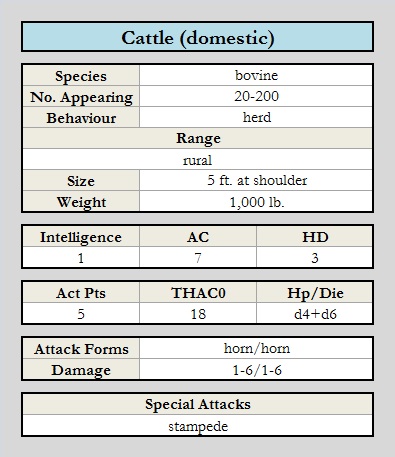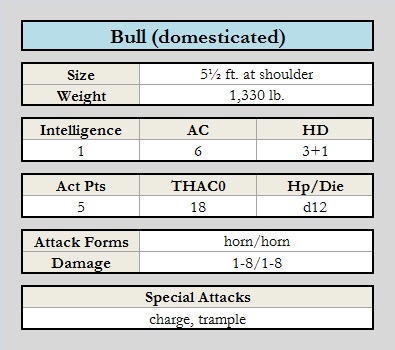Cattle (domestic)
Domestication of auroch cattle began in the southern Caucasus and northern Mesopotamia about 7,500 years ago. Since that time, domestic cattle have spread to every continent and are kept in nearly every kind of climate. They are quite tame and largely indifferent to humanoids, provided they are not aggressively provoked. Some bulls are still known to be threatening.
Cattle will stand and fight if cornered, but will prefer to run or move off until left alone. If not left alone and treated gently, particularly by a husbandman, they will usually give in and allow themselves to be led. When fighting, they will attack with their horns; these horns have been much shortened from their wild ancestors and have been encouraged, through breeding, to turn inward.
Cattle rarely charge individually, but if in a herd and they sense predators near by, particularly at night, cattle can become nervous. During these times, a loud noise, shouting, the playing of discordant music and even a bright light can start a stampede.
Creatures near a stampede may or may not be caught, as the cattle herd may swing in any direction. All creatures should roll 3d8, then subtract their intelligence from the total. For example, a character will a 14 intelligence rolls 17 on 3d8, for a total of 3 points.
Domestic Bulls are larger than cows and potentially threatening. The bull is prepared to charge if approached, dropping their heads and launching themselves 2–3 hexes (10–15 ft.) to strike with the full weight of their bodies. They will cause 3–13 damage if they hit this way. Any creature that is stunned will be knocked down and trampled by the bull for 1–4 additional damage.
See Bestiary.

